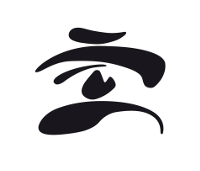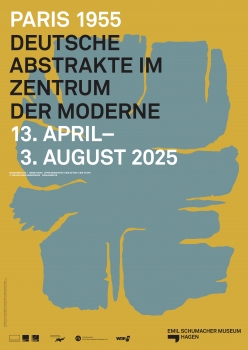Until then, only a few German artists had succeeded in establishing contacts with galleries and critics in neighboring France after the end of the Second World War. Presenting works in groups and solo exhibitions in Paris, the world capital of art at the time, enabled up-and-coming artists such as Brigitte Meier-Denninghoff, Emil Schumacher and Karl Otto Götz, as well as established colleagues such as Willi Baumeister, Ernst Wilhelm Nay and Fritz Winter, to achieve nothing less than an international breakthrough.
The exhibition at the Cercle Volney presented the varieties of abstract art that were represented in West Germany in the mid-1950s. The reconstruction thus creates a multifaceted picture of post-war abstract art, which includes rediscoveries of artists alongside the familiar ones. In retrospect, however, the special feature of the exhibition is not only that art from Germany was shown. Much more significant is the fact that the younger participants are now regarded as the main representatives of Art Informel.
In addition to Götz and Schumacher, they include the painters Fred Thieler and K. R. H. Sonderborg or Brigitte Meier-Denninghoff and Norbert Kricke from the field of sculpture. From today's perspective, their names are an integral part of post-war German art history.
In 1955, their artistic expression was still revolutionary. However, the fact that informal art was still new in Germany in the 1950s and was not unreservedly recognized is demonstrated by the tense history of the Paris exhibition. For example, Wessels and Drouin's anti-hierarchical exhibition concept was massively thwarted by official bodies in Germany.
The exhibition was finally opened on April 7, 1955 against all resistance and was enthusiastically received by the French and German press. Critics were amazed at the international standard, diversity and expressiveness of the artists from Germany. Drouin and Wessel's contribution to Franco-German cultural transfer can therefore hardly be underestimated. They succeeded in organizing an exhibition in Paris that would hardly have been possible in Germany at that time.
For the Hagen exhibition, which was conceived in cooperation with the Informal Art Research Centre at the Institute of Art History at the University of Bonn, by Dr. Anne-Kathrin Hinz as guest curator together with Rouven Lotz, Director of the Emil Schumacher Museum, the roles of the institutions and individuals involved are placed in their historical context. In particular, the anti-hierarchical exhibition concept of Drouin and Wessel in the Cercle Volney is the focus here.
The exhibition will be shown over a period of around four months from 13 April to 3 August 2025 and will be accompanied by a catalog with texts by Anne-Kathrin Hinz, Rouven Lotz and Christoph Zuschlag - hardcover, Deutscher Kunstverlag, ISBN 978-3-422-80342-8, € 30 (in the museum) / € 35 (in bookshops) - as well as an extensive supporting program.
Illustration after a serigraph of the motif ARU 7, 1955, by Willi Baumeister. White poster paper, 61.2 x 43 cm, edition unknown. The lettering was not set by the artist. Printed by Poldi Domberger, Stuttgart. VG Bild-Kunst, Bonn 2025
https://www.esmh.de/web/de/esmh/index.html

